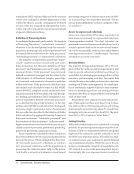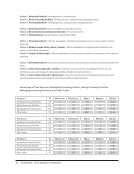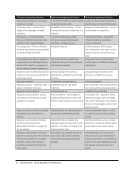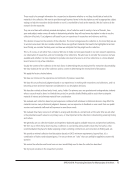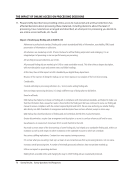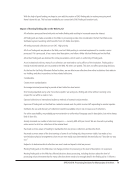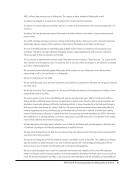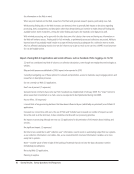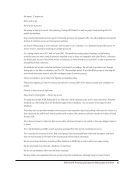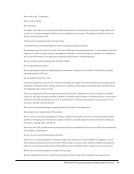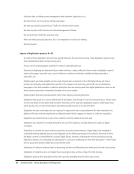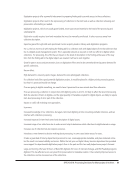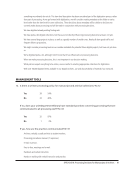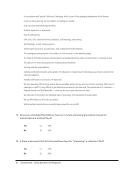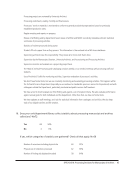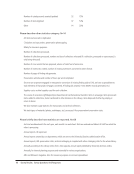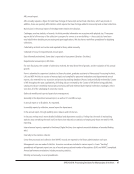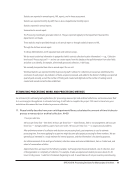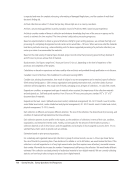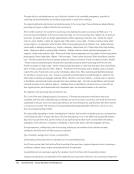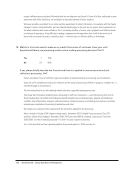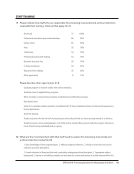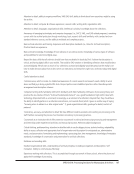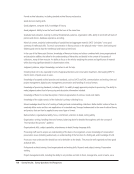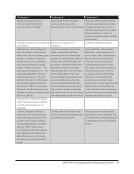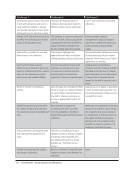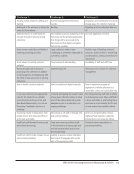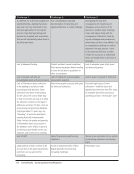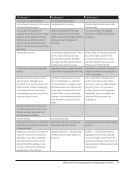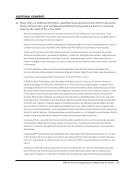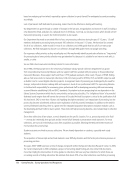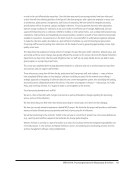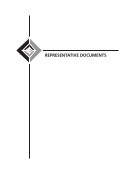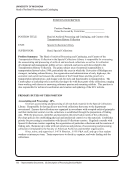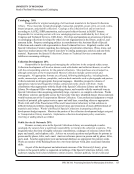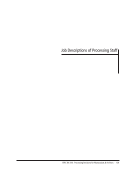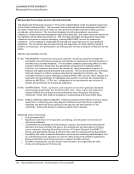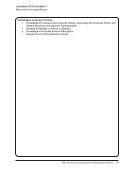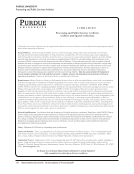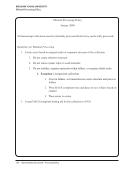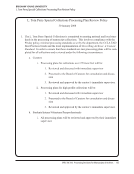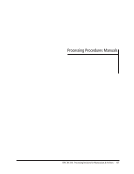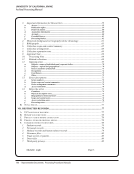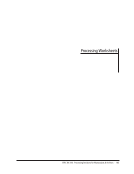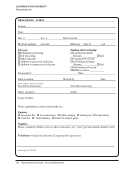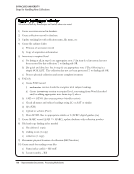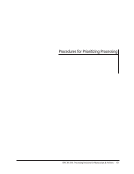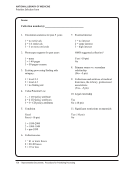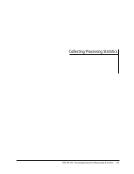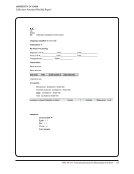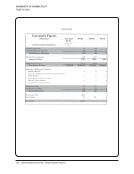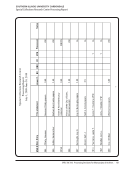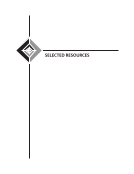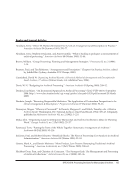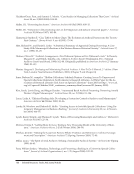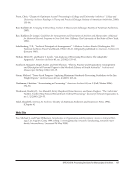30 · Survey Results: Survey Questions And Responses
Please enter any other terms used to describe different levels of processed materials and their
definition. N=17
Accessioned processed.
Before collections are processed, a review is undertaken to determine the level of arrangement and description the
default is folder level but sometimes we process at series or item level.
Box (or container) level: university archives often uses this level to describe the contents of the box for minimally
processed collections in order to provide access to researchers.
Level 1 — Provide just enough physical preparation and description to make collection available to the researcher.
Level 2 — A series level arrangement if collection warrants. Assignment of index terms, brief biographical/historical
description, and scope and content notes. Level 3 — Refoldering, reboxing, formal arrangement, detailed biographical/
historical information, scope and content notes, container lists of content at folder and/or item level.
Levels 1, 2, and 3 physical and intellectual control. Level 1: Accession record, inventory list, preliminary inventory,
processing record Level 2: Level 1, plus series level arrangement, box level preservation, finding aid, MARC record, EAD
Level 3: Level 2 plus DACS “Multilevel Optimum Added Value.”
Past practice created in-house card catalog descriptions of fully processed materials.
“Preliminary container list available. Please consult manuscript librarian for assistance.”
“Preliminary processing” is another term used here to denote what would now be called minimal processing but
with the expectation that it would receive full processing in the future. Preliminary processing was considered a still
unprocessed state. We have found that many collections that received preliminary processing in the past can now
be considered processed under minimal processing guidelines and removed from the backlog and be considered a
processed collection.
Pro-actively accessible: 1. Collection arranged to most appropriate intellectual level—series, subseries, folder, item,
etc. 2. Material housed in alkaline folders and document cases or other appropriate archival containers. 3. For non-
paper material, the originals are appropriately stored and use copies are available. 4. Preservation steps taken as
required. 5. Full collection guide prepared. 6. Full MARC record produced. 7. Collection may be digitized. 8. Collection
screened for security and sensitivity concerns and appropriate action taken. Adequately accessible: 1. Collection guide
prepared, with at least descriptive summary, administrative information, biographical/historical note, collection scope
and content note, and folder or box list. Series may or may not be established. Description will generally extend to the
individual folder level. 2. Material housed preferably in document cases (occasionally in records center cartons) or other
appropriate archival containers. Original file folders are retained if in good condition and labeled accurately. 3. For non-
paper material, originals are appropriately stored and use copies can be made on request. 4. MARC record produced
or modified. 5. Security, sensitivity, and preservation concerns considered and basic steps taken to minimize risks that
may exist in one or more of these areas. Not accessible: 1. Information about the collection is haphazard, incomplete
and possibly incorrect. 2. Material housed as received. 3. No existing public finding aid. 4. Security, sensitivity, and
preservation concerns have not been assessed. Inadequately accessible: 1. Preliminary inventory prepared, with
available information, including descriptive summary, administrative information, biographical/historical note, collection
scope and content note, and box (or other container) list. Description will generally not extend to the individual folder
level. 2. Security, sensitivity, and preservation concerns considered and plans made to minimize risks that may exist in
one or more of these areas. 3. Material housed as received. 4. Basic MARC record produced or modified.
Processing divided into tiered system: Level 1 Description: MARC record if it exists, legacy finding aid/list untouched.
Arrangement: None. Preservation Issues: None. General Guidelines: Organizational records are accessioned as
Please enter any other terms used to describe different levels of processed materials and their
definition. N=17
Accessioned processed.
Before collections are processed, a review is undertaken to determine the level of arrangement and description the
default is folder level but sometimes we process at series or item level.
Box (or container) level: university archives often uses this level to describe the contents of the box for minimally
processed collections in order to provide access to researchers.
Level 1 — Provide just enough physical preparation and description to make collection available to the researcher.
Level 2 — A series level arrangement if collection warrants. Assignment of index terms, brief biographical/historical
description, and scope and content notes. Level 3 — Refoldering, reboxing, formal arrangement, detailed biographical/
historical information, scope and content notes, container lists of content at folder and/or item level.
Levels 1, 2, and 3 physical and intellectual control. Level 1: Accession record, inventory list, preliminary inventory,
processing record Level 2: Level 1, plus series level arrangement, box level preservation, finding aid, MARC record, EAD
Level 3: Level 2 plus DACS “Multilevel Optimum Added Value.”
Past practice created in-house card catalog descriptions of fully processed materials.
“Preliminary container list available. Please consult manuscript librarian for assistance.”
“Preliminary processing” is another term used here to denote what would now be called minimal processing but
with the expectation that it would receive full processing in the future. Preliminary processing was considered a still
unprocessed state. We have found that many collections that received preliminary processing in the past can now
be considered processed under minimal processing guidelines and removed from the backlog and be considered a
processed collection.
Pro-actively accessible: 1. Collection arranged to most appropriate intellectual level—series, subseries, folder, item,
etc. 2. Material housed in alkaline folders and document cases or other appropriate archival containers. 3. For non-
paper material, the originals are appropriately stored and use copies are available. 4. Preservation steps taken as
required. 5. Full collection guide prepared. 6. Full MARC record produced. 7. Collection may be digitized. 8. Collection
screened for security and sensitivity concerns and appropriate action taken. Adequately accessible: 1. Collection guide
prepared, with at least descriptive summary, administrative information, biographical/historical note, collection scope
and content note, and folder or box list. Series may or may not be established. Description will generally extend to the
individual folder level. 2. Material housed preferably in document cases (occasionally in records center cartons) or other
appropriate archival containers. Original file folders are retained if in good condition and labeled accurately. 3. For non-
paper material, originals are appropriately stored and use copies can be made on request. 4. MARC record produced
or modified. 5. Security, sensitivity, and preservation concerns considered and basic steps taken to minimize risks that
may exist in one or more of these areas. Not accessible: 1. Information about the collection is haphazard, incomplete
and possibly incorrect. 2. Material housed as received. 3. No existing public finding aid. 4. Security, sensitivity, and
preservation concerns have not been assessed. Inadequately accessible: 1. Preliminary inventory prepared, with
available information, including descriptive summary, administrative information, biographical/historical note, collection
scope and content note, and box (or other container) list. Description will generally not extend to the individual folder
level. 2. Security, sensitivity, and preservation concerns considered and plans made to minimize risks that may exist in
one or more of these areas. 3. Material housed as received. 4. Basic MARC record produced or modified.
Processing divided into tiered system: Level 1 Description: MARC record if it exists, legacy finding aid/list untouched.
Arrangement: None. Preservation Issues: None. General Guidelines: Organizational records are accessioned as












